Sandwiched between the thickly forested Eastern Ghat hills and the Bay of Bengal, the region in the country’s East once boasted of over 7,000 temples. With time, the number has significantly depleted, but there is abundance enough to command attention. The grandest among the remnants are the Lingaraj Temple in Bhubaneswar, Jagannath Temple in Puri, and the Sun Temple in Konark. This trinity, clustered together in a compact triangle — much like the “Golden Triangle in the East” — is of high religious significance among devoted Hindus, while to others, the three are outstanding examples of temple architecture, opulently revealed by their origin, scale and proportion, and in the awe-inspiring narrative strength of their sculptural elaboration.
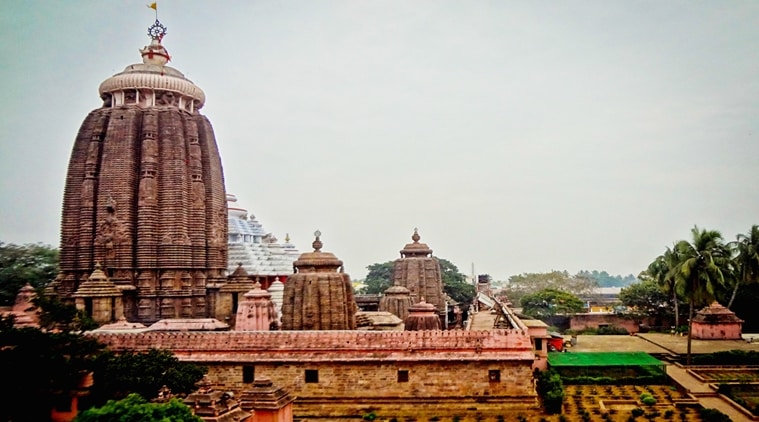
Being one of the “Char Dhams”, the religious connotation of Puri and the 12th century Jagannath (Krishna) Temple is of very high order among Hindus. (Source: Abhishek Barua/Wikimedia Commons)
The state capital of Bhubaneswar is the gateway city to Odisha. Its history dates back over 2,000 years and there are many illustrations to affirm this. Dhauli, the site of the great battle of Kalinga in 261 BC is only few kilometres away from present day city centre. It was the aftermath of this bloody combat that inspired triumphant Mauryan King Asoka to embrace and preach Buddhism. The rock, which bears set of his famous edicts, still exist close the battle ground location. An elephant’s head, symbolising Buddha, is sculpted on the top of this rock. The Japanese, in 1972, built a gleaming white pagoda nearby, recognising the area as the nucleus from where Buddhism radiated into other parts of the world. Also close to the city centre are the twin hills of Khandagiri and Udayagiri, where artwork and statues inside some rock-cut caves confirm presence of Jain ascetics during the 2nd century BC.
However Bhubaneswar stormed into eminence between 7th and 13th centuries when Hindu rulers of the famous Kalinga dynasty embellished landscape with several grand temples, some of which still remain on ground to provide a feast for anyone who has taste for art and history; unquestionably the thousand year old Lingaraj Temple aptly demanding the biggest attention.
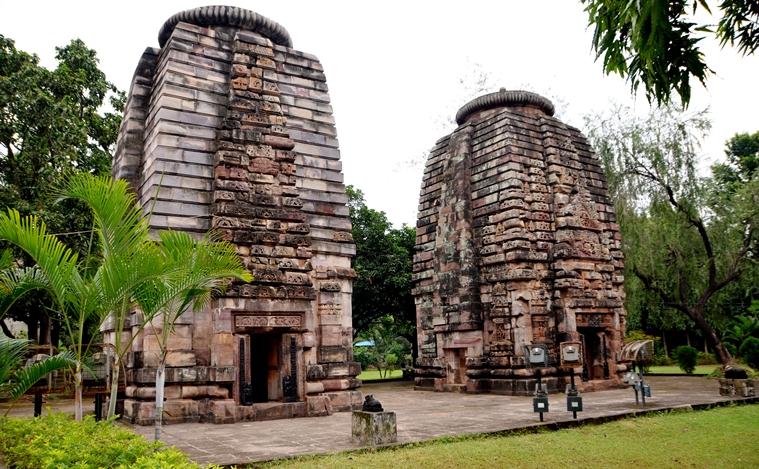
Many temples like this dot Bhubaneswar. (Source: Sandip Hor)
Located on the banks of the Bindu Sagar Lake, this 11th century shrine fills the air with holiness. Many locals will not start their daily routine without praying at this temple first. The atmosphere around the walled sanctuary complex, which houses the main temple alongside several secondary ones, is always lively with ceaseless flow of pilgrims. The sounds of bells ringing and drums beating in resonance with the chanting of the priests and hums of the devotees inspires a feeling of spirituality even among the sceptics, the aroma of flowers and burning incense sticks aiding the cause. While the sacredness of the venue soothes mind, it’s the temple architecture that overfeeds one’s cultural appetite. The display of classic art engraved on exteriors of every structure inside the complex appeal to connoisseurs like poetry on stone. The 70m tower of the main temple, which can be seen kilometres away, is profusely whittled with beautiful figurines of Hindu gods and goddesses in various postures, perhaps opening the minds of receptive worshippers to initiate a communion with the divine.
No other temple in the city compares to Lingaraj in terms of sheer size and spiritual consciousness, but few others such as the 10th century-built, red and gold sandstone Rajarani Temple, the elegant Mukteshwara Temple and the oldest of all, the Parsurameswar Temple boast equal artistic ovation.
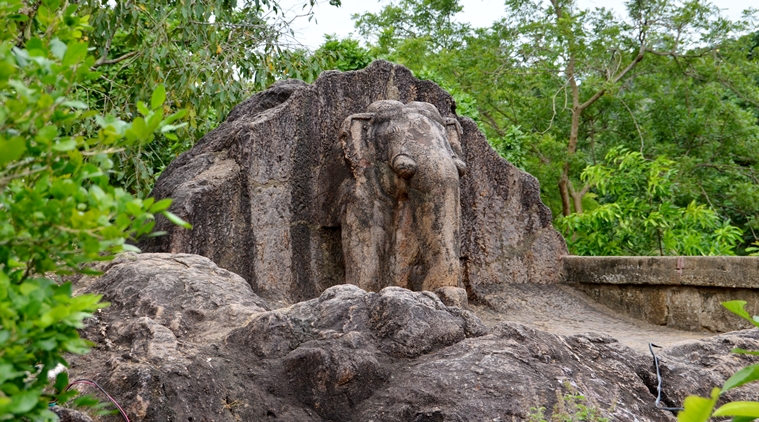
Elepant sculpted above Asoka’s rock edicts. (Source: Sandip Hor)
Most of these ancient temples are located in the older part of the city to which newer additions, blueprinted by famous German architect OH Koenigsberger, reflect a wonderful blend of modernity with antiquity. It’s amazing to notice trendy shopping malls sharing backdrop with soaring sandstone towers of ancient temples, saffron-clads priests with iPhones glued to their ear, speeding off in Honda two-wheelers or a luxury Mercedes giving way to a passing bull. The latter gaining higher status as the traditional carrier of Lord Shiva, to whom most of the city’s temples are dedicated.
Only an hour’s drive from Bhubaneswar is Puri, which retains the quintessential charms of a typical Hindu pilgrimage site. The only 21st century additions are a series of modern hotels mushrooming on its seafront promenade.
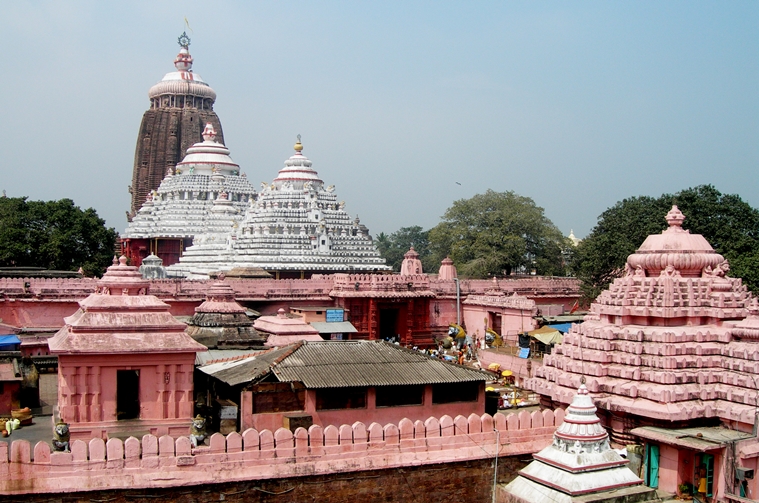
Thousands come to the Jagannath Temple in Puri in July for the annual Rathjatra. (Source: Sandip Hor)
Being one of the “Char Dhams”, the religious connotation of Puri and the 12th century Jagannath (Krishna) Temple is of very high order among Hindus. Many want to visit this temple at least once in their life time, and that too during the annual “Rathjatra” festival in July, when deities of Jagannath, brother Balaram and sister Subhadra from the main temple are journeyed in three richly decorated rathas or chariots through the streets of Puri to their aunt’s temple, Guchinda Mandir. It considered very pious to pull the chariots, or at least touch the ropes, that draw them. The 2km voyage takes hours as the colourful procession — with lakhs of devotees participating — moves at less than snail’s speed.
Like any other Odisha shrine, the titanic Jagannath temple consists of a deul, the convex curvilinear spire that can be viewed from a distance, the garbhagriha, the sanctum where the deity resides, a front porch called jagmohana, where devotees gather, and an offering hall called bhog mandir.
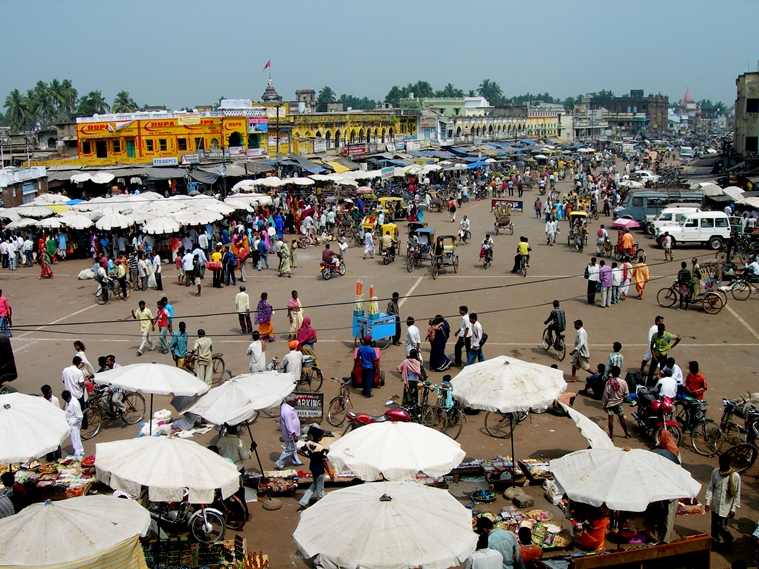
Puri’s exotic location on the shores of Bay of Bengal also makes it an ideal holiday destination, particularly for the Bengalis from neighbouring West Bengal. (Source: Sandip Hor)
There is an interesting story about the temple’s 95m spire, which is covered by carvings of incredible artistry. Curiously, it was only in 1975 that archaeologists discovered them. Until then it was covered in white coat, making people wonder for centuries why the most significant monument of the region was untouched by its rich sculptural heritage. Legend says that in the 17th century, the ruling king plastered the temple to protect it from the savage of salty air from the sea. Puri’s exotic location on the shores of Bay of Bengal also makes it an ideal holiday destination, particularly for the Bengalis from neighbouring West Bengal.
If devoutness leads travel to Bhubaneswar and Puri, then it’s the outstanding examples of art and architecture of the 13th century Sun Temple that draws visitors to Konark, a UNESCO World Heritage Site. Crowning on all defining elements of Kalinga architecture, the marvels of the Sun Temple can evoke artistic praise no less than temples of Angkor in Cambodia or Borobudur in Indonesia.
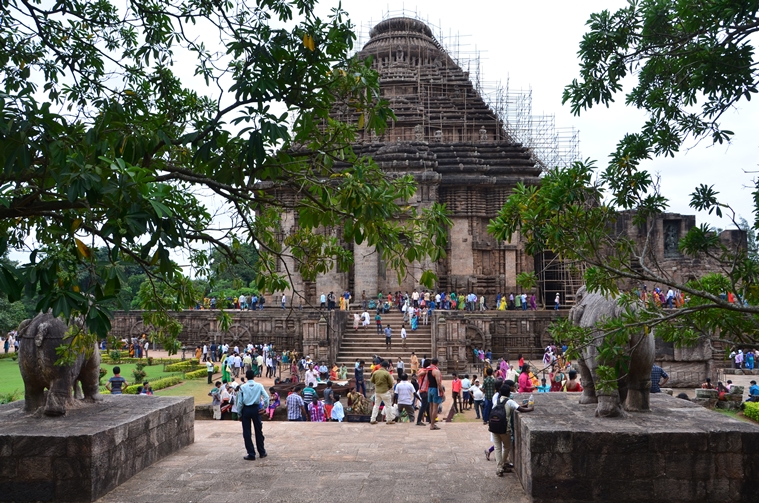
The Sun Temple can evoke artistic praise no less than temples of Angkor in Cambodia or Borobudur in Indonesia. (Source: Sandip Hor)
A masterpiece of creative genius in both conception and realisation, the temple now in its ruins represents a chariot of the Sun God, with 12 pairs of wheels drawn by seven horses evoking its movement across the heavens. It is embroidered with sophisticated and refined iconographical depictions of contemporary life and activities. The 90m tall main spire, which has now collapsed, stands on a porch of height over 40m and makes the scale of the edifice breathtaking, even in its savaged state. Every inch of the temple is filled with sculptures of unsurpassed beauty and grace, the subject matter delineating the social, domestic and religious aspects of the 13th century world. The thousands of images jostling for wall space include deities, demons, dancers, lovers, animals and myriad scenes of courtly life. “Here the language of stone surpasses the language of man,” remarked poet Rabindranath Tagore after his first glimpse of the monument.
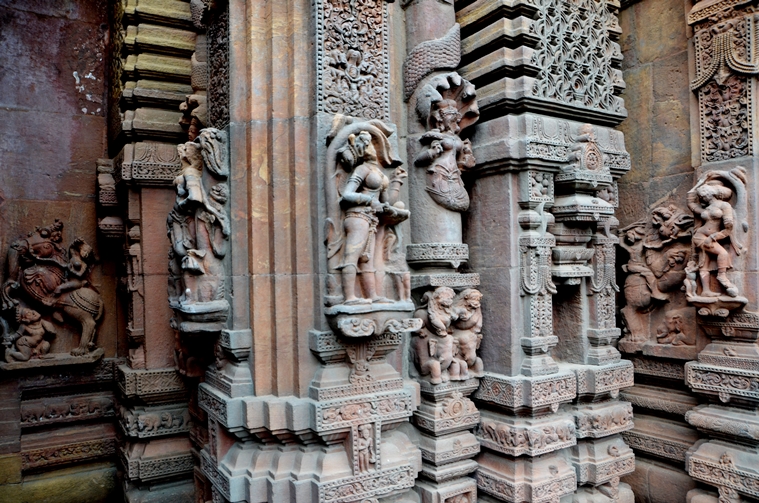
While the sacredness of these venues soothes mind, it’s the temple architecture that overfeeds one’s cultural appetite. (Source: Sandip Hor)
The temple is famous for erotic sculptures, which are also noticeable on the walls of Puri’s Jagannath Temple. When ‘commoners’ question the presence of such art in temples, scholars provide one possible explanation. It’s said, after the carnage of the great battle of Kalinga, the population of the region became alarmingly low. The worried future rulers commissioned artisans to introduce eroticism in the temples to prompt more copulation among regular visitors so as to eventually cause increase in population. There is no documentary evidence of this, but the nations surge in population over time perhaps suggests some truth in it.
FACT FILE
Getting there: Bhubaneswar has excellent air, rail and road connection with rest of India. Puri is 60km away, while Konark is 35km from Puri.
Stay: No shortage of hotels and resorts to suit budget and taste in both Bhubaneswar and Puri. Konark is generally undertaken as a day trip from either location
When to visit: October to February, when the temperatures are moderate.





